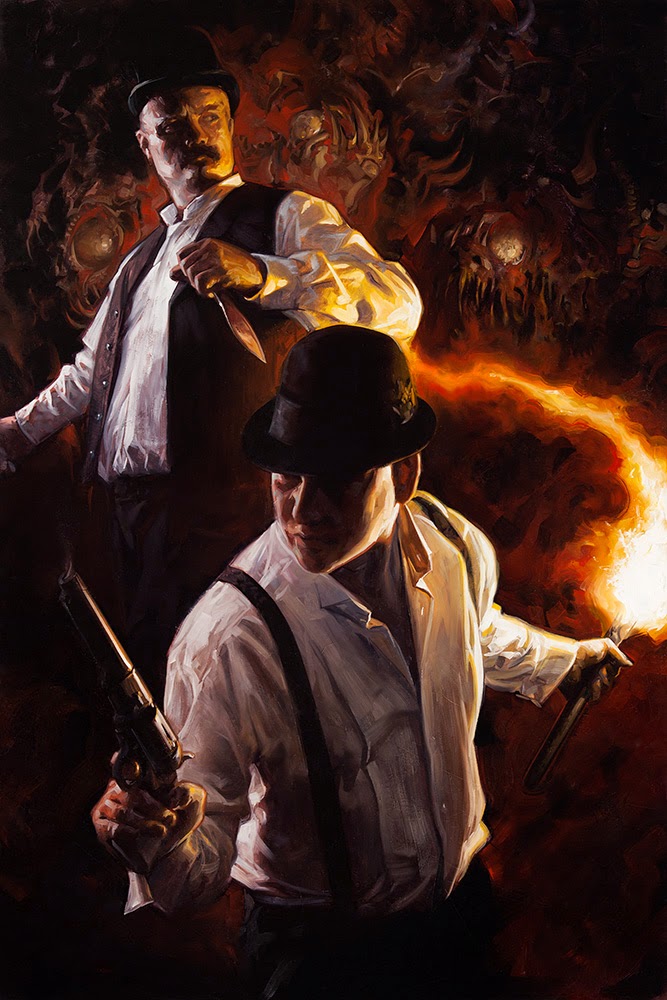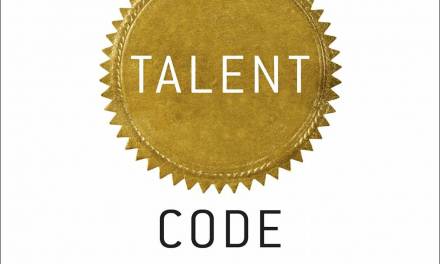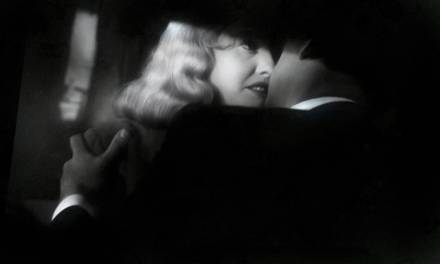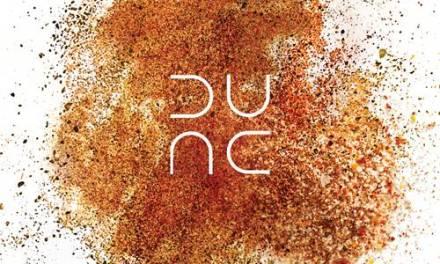 |
| A cover which I painted, or actually symbolic of exploring the mysterious depths of freelance illustration? You decide… |
David Palumbo
When I give portfolio reviews to emerging artists, I always ask “what type of work would you like to be doing?” and I almost always get the answer “book covers.” A popular second is “Magic cards.” Generally speaking, young fantasy illustrators seem to have their eyes set to very specific and narrow goals which are, understandably, the sources of inspiration which may have pushed them towards the field in the first place.
I don’t know that many people might describe me as a “book cover artist.” I will use the term to help explain my job to non-artists because sometimes I do book covers and people understand what that is, but I‘m definitely not one of those rare individuals (for example Dan Dos Santos and Chris McGrath) whose work does seem fairly dedicated to this very specific branch of the illustration tree.
The problem with being a book cover artist, even mostly a book cover artist, is that there just aren’t enough book covers, even in the fairly lush publishing landscape of today, for very many people to make that work. Those who do it tend to lead and define their genre. The good news is that there is a hell of a lot of other work out there to do which is just as fun and exciting, people just don’t seem to know what it is or that they want to do it. So when I ask that question and am told “book covers” or “magic cards,” I’ve started thinking it might be helpful to point out the world beyond the obvious.
I started by looking up every commission which I’ve completed in the past three years and breaking up categories. Here are the avenues which I’ve personally kept myself busy in to varying degrees:
Advertising
Book (covers)
Book (interiors)
Comic Covers
Concept Art
Editorial (covers)
Editorial (interiors)
Editorial (online)
Film Posters
Gaming Illustration (non-mtg)
Gaming Illustration (mtg)
Private Commissions
Trading Cards (non-gaming)
By year, treating each commission with equal weight regardless of pay, book covers made up 15% for 2012, 13% for 2013, and 12% for 2014 (to date). The number of jobs varied significantly between years, but the ratio was steady. Magic cards, the other popular goal among aspiring fantasy illustrators, accounted for 37% in 2012, 19% in 2013, and 19% in 2014. 2012 surprised me there but the following two years leveled off again. Excuse my numbers and stats here, but it brings me to my point:
When people ask what work I do, I generally say “oh, genre illustration really, mostly book covers and Magic cards” because it is easy to say and it feels mostly accurate, but really these things only account for approximately one third of my actually paid commissioned work in a typical year and that is without factoring in personal and gallery work. What the hell else am I working on? I think I’m part of the problem.
In reality, I don’t really know what I do. All I know is that I’ve made an effort to cast a broad net while keeping my work recognizably my own. Certainly working with an artists representative ( I have been for just under two years now) has expanded my reach to clients I never would have considered previously. My work rarely ever touched editorial or advertising prior because I didn’t know it was something that I could be doing. I ignorantly dismissed those areas as the type of jobs that wouldn’t be interested in a realist painter. The truth is that I just thought “well, I guess I’m doing fantasy and science fiction so I’ll limit my ambitions to the same twelve or fifteen clients that I already know.”
I’ve heard it said before that you only need about 3-5 regular clients to make a living as a freelancer. This is true but I’ve also learned that, even then, hot and cold spells can still make a steady pace difficult to maintain. Clients come and clients go. I think it is a reasonable goal to forge long term relationships with clients who treat you well, but to avoid putting so many eggs into one basket that you would be out of work if they went under, cancelled the product line, changed art directors, or simply no longer found your work a good fit.
One of the great things about being a freelancer is that we don’t really get downsized if we keep our client base diverse. Job security is a strong portfolio and an open mind. If you have an eye out for new opportunities and are always actively promoting, creating, and expanding, you will have no problem pivoting when a regular client dries up. Personally, I also find it much more conductive to growth as an artist if I am frequently taking on new challenges and working with new people.
Ultimately what I’m saying is: pursue the goals which you are passionate about. Go get those cover jobs and do your very best with them. But also look further. The world is full of art and somebody needs to pay somebody to make it. Look beyond the expected and you might find some great opportunities waiting for you.







This is really great advice. There is a galaxy of interesting work out there! (Really!)
Thanks Dave, that's a great post. How does one get an agent/artist rep?
I didn't go too much into the rep business because I still feel pretty new to it. I never thought that was a course I would take because, like I said, I figured I'd just stay in my little genre pond which is small enough and contracts are standard enough to do well solo. My rep approached me and I thought it sounded like an interesting opportunity. If I were to find myself again without a rep and wanted a new one, I'd approach it similarly to approaching a new client: research agencies and present a portfolio and resume to any which seem the right fit and inquire if they have any open spots.
Having the rep is helpful, particularly for certain clients who are less likely to seek out individual artists (mostly advertising), but much of the work can be reached on your own if you realize that you want to reach for it. Magazines which hire a lot of art like The New Yorker, Rolling Stone, etc. have editors and art directors the same as any publisher or game company, you just have to reach out to them and show them work which is relevant to their brand. Another thing which I'm new to is the website Behance, but I'm understanding that to be a very useful tool for reaching a broader range of clients as well. Mostly it is just about thinking wider.
Not only very amusing but also incredibly useful! Thanks for posting- just goes to show how setting your newsfeed to deal you a regular dose of Muddy Colours can really give you the edge, professionally speaking.
As a recent graduate I think I can speak as to why so many of those young professionals you meet seem to have such a limited idea of what they want to do. In my school once you got into the higher level illustration courses you were to pick a category (book covers, editorials, and advertisements/package designs) and all your work from that semester was suppose to fit into that category. I had seem the varied categories people like Victo Ngai, James Jean, and others were working in. So when they came around to ask what I wanted to do with my life I felt like it was a bit of an unfair question. I think they were concerned that if you didn't have this set that your portfolio would be a confusing mess. But whenever I put up an editorial piece many mistook it for a book cover and the other way around as well… I took this as a compliment; that my work always looked like mine but could clearly be used in multiple different areas. When talking of the business side of things, if the school you go to talks about it at all, things are similarly categorized… so that if you are a person like me whose pieces seem to work in different areas it becomes difficult to know how to market yourself. They always teach not to “umbrella” your marketing, posts on Muddy Colors also warn of blindly shooting out promotions without knowing the branding of the company through and through. But what if your work really could work in different areas? How do you market yourself, as you clearly have, to such varied types of clients without seeming too ignorant of the field and how it works? (although as a beginner I clearly am ignorant of more than a few things I'm sure haha)
Well, it can be a tricky thing, especially starting without an established client base. It does make sense for schools to push students to have a focus because it makes starting out easier if you concentrate your efforts and begin branching as you gain ground. For someone just starting out, I certainly advise taking a broader view of options to better choose where you want to direct your efforts rather than just working towards the most obvious without getting a lay of the land. The warnings about mass mailings and knowing your clients are absolutely something that I agree with.
When your work is adaptable to many purposes, it doesn't mean that every individual piece will be. I approach a cover, an interior, a game card, and an editorial illustration very differently from eachother because each has different problems to solve and goals to achieve. My editorial work, generally speaking, would not make very good book covers. Each purpose has its own language. Sometimes a piece overlaps, but often they won't. I'm currently working on three images for a magazine story and one of them *might* fit the bill for a cover image, the other two absolutely wouldn't but that's ok because they are not supposed to. If teachers and peers are uncertain where a piece belongs, it may be their personal bias but it may also indicate that you are not hitting the right mark. Victo Ngai and James Jean are extremely adaptable but their work is always appropriate for its use. I don't know your work so I can't say if I agree or disagree, only recommend that you give notes like that their due consideration. It might also indicate trying to please too many types of clients in one piece and missing the primary purpose.
So how do you market to varied clients? You show each client that you can solve their problems, that you understand their brand, and that you can deliver consistent quality of work. If the clients are very different from eachother, it means showing them different tailored portfolios. Ideally the client won't even know that your work is being used in other fields because you only show them what is relevant to them. I'm not saying that a client would mind, rather that they only really care about being absolutely sure that you can meet their challenges so don't confuse them with inappropriate work. This is another reason that starting out is easier with a more focused direction: it takes time to build multiple portfolios, even if some pieces overlap.
This is great info and encouragement, David! So many of us with a passion for scifi/fantasy cling to those few mainstays that we hear pay well and/or fairly that we hardly give any thought to expanding outside of this very narrow niche.
It wasn't till I met Bill Baker at IlluXcon (God rest him) that it even dawned on me to explore comic book covers, in particular. I've had a passion for comics for years and got my earlier inspirations from the media, despite having moved more towards an illustrative vein. I have to wonder seeing comic covers on your list if you have any insight for artists seeking to enter into this particular niche?
I've read some submission areas for companies, but most seem to want artists who do both covers in addition to interiors. Can you only get cover jobs for comics if you're well known (and therefore a good selling point for the cover?) Any advice you might have would be much appreciated!
Thanks once again for this very insightful entry. I love the good work you all are doing here at Muddy Colors!
Being as I have just started out I don't really have a lot of data to gauge if my portfolio is hitting the mark with art directors or if my marketing strategies are working. Either way I think your comment on trying to please too many different people at once is definitely true for some of my older works. I think I'll look back through my current portfolio and my Spectrum books with this idea in my head and see if any light bulbs turn on. Thank you for taking the time to respond to my questions I really appreciate it.
I'm in a similar situation, and in addition to the difficulty of striking a balance between meeting specific needs and showing variety, there's the balance between doing work that fits in the industry as it is today, and just doing what you want and hoping that there will be a place for it. The former might mean that you don't stand out, and the latter that you don't do any relevant work.
What would be some specific areas other than book covers and MtG that scifi/fantasy illustrators can do work for? You say advertising for example, but for what kinds of companies?
I don't know that I could advise anyone to take the path which I took simply because each path is unique and who's to say what works for them works for others. That said, I started with an attempt to fit the industry as I understood it and, after a few years, decided to be more true to myself (and I now understand this is not something which is ever actually achieved, just improved on) and let the right work find me. As you said, you need to say something from inside you to stand out, but a little bit of time getting to know the business helps you understand what you even want to say. I firmly believe there is also a period of time where you are still just getting your painting and business chops regardless what you plan to be doing. Some people come right out of the gate with something fresh and exciting, but maybe most of us just pay our dues until we are ready to evolve forward. There's no one way, you just do the best you can and adapt when needed.
Hi Angela,
My experience in covers has been mostly with Dark Horse. In their case, I don't think that they have any issues using different artists on covers and particularly on titles which are appropriate to painted treatments (film/video game tie-ins for example). I think, like anything else, the most important thing is fitting the vibe of the company and project. I did a few jobs for Marvel some years ago but was a bit of a mismatch for superhero books and it never really went anywhere. Dark Horse, by comparison, has been a total blast. I've never worked for DC or Image. DC seems to use cover specific artists sometimes (or at least Vertigo does), I think Image doesn't really work that way since they are mostly creator owned titles where the creators are doing their own covers. The biggest surprise to me in comics was that the covers are generally commissioned by the editor of the title. That completely makes sense, but it means that if you want to get work on a particular title you need to make sure you get your work to THAT editor and not just a general “art department” mailing.
I'm so new to advertising I don't know how to go specifically for it without a rep/agency. When it comes to advertising, you are never really working directly with a company but rather with the ad agency and their people. They put together a campaign and then hire artists to help develop it, so if you wanted to reach out to anyone it would be the art buyers at the agencies. A number of people have told me that having a solid Behance portfolio helps bring in that kind of work.
I've found working in editorial/magazines and comics has been a lot of fun and often still very “genre.” Freelance concept design (either games or film) is a path that a number of artists I know have been moving in to. Some have been doing well in crowdfunding their personal projects or getting involved in galleries and the private collector market. For me also, much of it has come from making time to create personal work and develop ideas which I didn't know where I'd find clients for but I found interesting and, as I shared that work around online, those clients eventually found me. That is a slow road but I believe it works. Create as much opportunity as possible and be ready to go when something lands. That is also why I felt showing work at certain conventions was very important to getting things moving, you don't always know who you are looking for with things like that so the best you can do is make yourself as visible and accessible as possible
Thank you! I want to aim for illustration work but I wasn't sure where fantasy/sci-fi art is used other than concept art or book covers. I will look at Behance, too.
I've been meaning to ask, because I see conventions mentioned on this blog, but what are some conventions in the States, particularly the midwest? I've seen a couple named, but most of what I'm familiar with are anime/manga cons of the smaller variety around my area since I live almost smack dab in the middle of the States. I really enjoy selling at anime/manga cons, but I'm beginning to want more possibilities.
How in all of this fits “specification”? So many professionals encourage to have clear vision of your career, know exactly in what field and what company you want to work for and follow their style. But being original at the same time isn't contradiction to it? I'm totally confused about it. People are laughing when they hear “I just want to paint everything”. I myself am jumping from topic to topic in my works and I feel lazy and unreliable because of that. Too many different things are tugging at my heartstrings and I am not strong enough to limit myself. I feel pressure to pick only one very specific path and ignore others. I, as an artist would like to be able to just paint any world I can imagine but this seems childish and without prospects for a success…
Thanks for the additional advice about comic covers, David! I really hope to explore the field at some point in my development, so it's great to have a better idea of who to approach.
The Fables covers from Dan and James Jean are some of the most inspiring pieces for me, especially. I've been surprised by the very indie-feeling roundup for Image lately as well. So many new and interesting titles!
At any rate, thanks so much for taking the time out to reply. Best wishes!
I posted the same question in one fantastic week today! Thanks for answering it, I slowly getting it right. Specify at begging for faster progress but don't close all doors when you are better. Thanks!
that's relly helpful artical thanks for share it
funny videos clips
Thank you for the info and the numbers, David. Excellent article!
I don't do many conventions, but Spectrum Fantastic Art Live is one of them and that takes place in Kansas City MO in the spring. So far as meeting artists and talking/seeing art, that and Illuxcon (PA, so not midwest) are the must see shows. Other midwest shows which I've never been to but know by reputation are C2E2 in Chicago and GenCon in Wisconsin (I think?). There have been some decent ones in various larger cities as well, so you might just search “(the name of a city in driving distance) Comic Con” and go from there. Like, “Denver Comic Con” for example. Many decent sized new shows popping up recently
Yes, beginning with a focus and working towards a cohesive look is best for starting, and exploring other paths and being open to new opportunities as you develop 🙂
Thank you! GenCon is in Indiana, and I've considered going to that one because while it's a bit further to drive, it isn't impossible. C2E2 I've heard about too and that one has been a goal of mine to get to. I might go as an attendee next year.
It was really informative. Your website is useful. Many thanks for sharing!
uk illustration agencies
Hello! Thank you for this article it was really insightful. I feel bad cause I really do want to create book covers and magic cards >< But I realize this is what everyone is after and it might not be enough to sustain an income. I am glad there are other ways to go:) Do you believe an artist can really live by his work? My dayjob is rather far from creative and I wish that one day I will have enough as an artist to go by. But generally people around me dont share this idea and consider my artwork just a hobby.
Thanks for this. It really helped
there will be more things to be discussed when we talk about the artist cover and the changes which are needed to be brought down in the same direction. resume samples 2016
I am pretty open myself, but since I'm still young and technically new (I'm basically a nobody still in town, especially since I left the small town I grew up in), it is difficult regardless for me to get work. I do fantasy, but also natural animals, cute and scary alike. There are things I need to greatly improve in my work, sure, including drawing humanoids again, but…maybe it's my lack of supportive social circles? I don't have much of a strong network. Also, it is the massive fees a lot of shows and events shove on artists for “exposure” I really cannot afford on a min wage day job + framing and related costs.
I have this dilemma too. Whenever anyone asks what kind of work I'd be looking for or specializing in, I have a hard time listing it as I'm pretty ope minded. I go between painting on 3d objects, watercolours of animals and dragons, digital fantasy art, and I'm open to working between book cover (I doubted myself but Ive seen some pretty bad covers locally and think I could help some folks – especially with nicer text and formatting as I am interested in graphics design as well), to possibly trying out game assets for mobile companies to use (this is a recent idea I've seen online), to general monster creating and also even scienfitic wildlife art!
I'm all over the place. Problem is getting my audience built, I'm still unknown, haven't had any commissions in at least 2 years. I attend the odd con and art fair I can afford to do, which most aren't very affordable at all for emerging artists (breaking even is tough plus eating out=bubye monies), so it's tough.
maybe event posters? I've thought of this occasionally, tend to forget though.